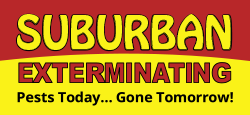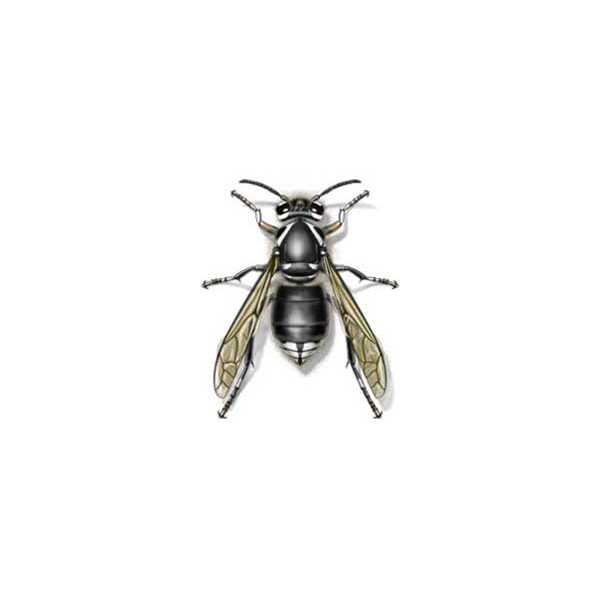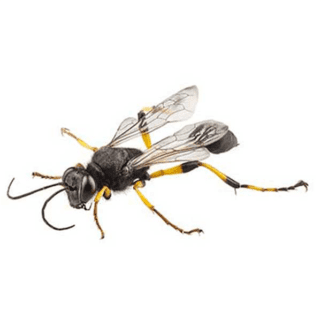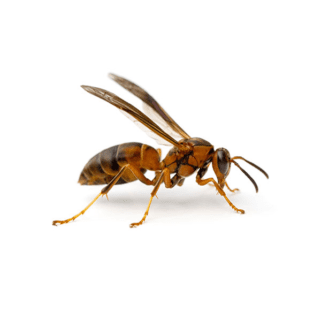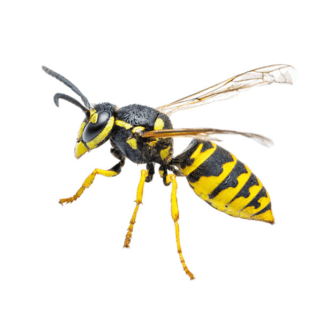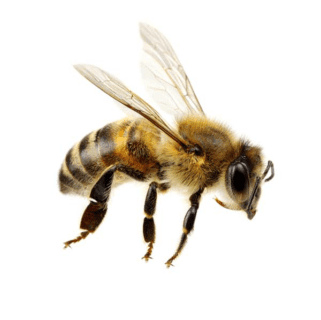Bald-Faced Hornets in Suffolk County & Nassau County
Recognized for its patterned face, these black and white wasps pose intriguing challenges for homeowners. Bald-faced hornets are relatively large flying insects and will defend their nests aggressively when they feel there is a threat. These beneficial wasps live in colonies with thousands of individuals and would be a lesser threat to humans if they did not nest in structural voids, attics, and cavities associated with landscaping features.
In Suffolk County & Nassau County, the distinctive presence of bald-faced hornets becomes increasingly noticeable during the summer and early fall months. Despite their name, these formidable insects are more closely related to wasps than true hornets, sharing family ties with yellow jackets and paper wasps.
Bald-Faced Hornet Habitat
The bald-faced hornet is more likely to build its large, paper nest around areas where humans live, work, and play. Nests are created in spring and early summer by worker hornets chewing on natural wood fibers. These hornets build gray-colored, egg-shaped nests that can become quite large, some growing to 24 inches in length and 30 inches in diameter. Bald-faced hornets will construct nests in trees, under eaves, around light structures on buildings, and inside children’s playhouses. When the nest is finished, it will be the size of a football or basketball.
Bald-faced hornets do not build their nests in the ground like digger wasps and cicada killer wasps do. Instead, you’ll always find the nests at least three feet above the ground in bushes, shrubs, fences, lights, and under the eaves of buildings. A bald-faced hornet’s nest is gray in color and can be over two feet long. For nests located near human activity, extreme caution is needed. A hornet colony consists of a queen and many workers, and a single bald-faced hornet’s nest may contain over 400 workers!
You’re most likely to see bald-faced hornets during the daytime during the late summer season when population numbers are at their highest. By late summer, these hornets have some impressive homes with many family members. Each winter, only the queens survive in protected places like rock piles, hollow trees, under bark, and in the walls and attics of buildings. The queen builds a new nest every spring.
Bald-Faced Hornet Behavior, Threats, or Dangers
Bald-faced hornet stings are venomous and can cause pain and swelling for about 24 hours. People who are allergic to bee stings may have similar reactions to a bald-faced hornet sting. Bald-faced hornets scavenge in trash receptacles and forage upon food and beverages consumed outdoors. They also consume ripe fruit in gardens, farms, and vineyards. In the autumn, the combination of cooler temperatures and reduced food stimulates newly emerged reproductive wasps to seek warm shelter, and they are more likely to invade homes.
As with many stinging insects, these pests will sting if they feel threatened or their nest is in danger. If a nest is located near human activity, it is important to contact a professional hornet control company for stinging insect control or nest removal.
Need help with Bald-Faced Hornet control?
Need Expert Advice?
Leave your information below and we'll be in touch soon!
"*" indicates required fields
*During normal business hours. After hours calls will be returned the next business day.
Bald-Faced Hornet FAQs
What do Bald-Faced Hornets look like?
Bald-faced hornets have black and white coloring, including a predominantly black body with white markings on their face, thorax, and the tip of the abdomen. Their face is almost entirely white, which is the reason why they are referred to as “bald-faced.”
Bald-faced hornets are one of the largest species of stinging insects we deal with on Suffolk County & Nassau County. These hornets are robust, measuring about ½ inch to ⅝ inch in length, and they are easily recognizable by their characteristic ivory-white markings.
What are the signs of Bald-Faced Hornets?
The presence of bald-faced hornets can be identified through several signs, including:
- Nest: Bald-faced hornets build distinctive large, grayish, paper nests typically attached to trees, shrubs, or structures like buildings. The nests are often shaped like an inverted tear or football and can be quite conspicuous.
- Flying Activity: Observing a higher-than-usual number of large black and white stinging insects in the vicinity, especially around the nest, is a clear indication of bald-faced hornets.
- Audible Buzzing: Bald-faced hornets produce a distinct buzzing sound, especially when they are active around their nest. The buzzing may become more pronounced if the nest is disturbed.
What damage do Bald-Faced Hornets cause?
Bald-faced hornets can be problematic due to their aggressive defense of large nests. Their territorial nature makes them a threat to people, pets, and livestock, causing painful stings and potential allergic reactions. Nests built on structures may lead to property damage, impacting outdoor activities. Professional removal is advisable to mitigate these risks safely.
Can Bald-Faced Hornets hurt me?
Yes, bald-faced hornets can pose a threat to humans. While they are not inherently aggressive, they are highly territorial and will defend their nests vigorously if they perceive a threat. Bald-faced hornets can deliver painful stings, and their venom may cause severe allergic reactions in some individuals. Unlike honey bees, bald-faced hornets can sting repeatedly. It is advisable to exercise caution around their nests and seek professional assistance for their safe and effective removal to minimize the risk of stings and potential health issues.
Whatever you do, do not disturb a bald-faced hornet’s nest! Bald-faced hornets are very protective of their hives. Animals or humans can be attacked by a large number of aggressive wasps. Unlike some other stinging insects which can only sting once, bald-faced hornets can sting multiple times because their stingers are not barbed. A Bald-Faced Hornet’s sting is painful because it contains venom. The venom injected by the stinger can make the stings hurt, itch, and swell for about 24 hours.
How do you prevent Bald-Faced Hornets?
Preventing bald-faced hornets involves taking proactive measures to discourage nesting near your property. Trim vegetation regularly to reduce potential nesting sites, seal openings in structures, and keep food sources, such as trash, securely sealed.
Since DIY nest removal is risky, consider enlisting preventative pest control services. Professionals can identify and address potential nesting areas, implement protective measures, and provide ongoing monitoring to keep your property hornet-free. Regular inspections and swift action by pest control experts contribute significantly to effective and safe hornet prevention.
Suburban Exterminating offers comprehensive pest control services, including preventive measures, the safe removal of hornet nests, and ongoing monitoring to ensure your property remains hornet-free. If you notice a nest on your Suffolk County & Nassau County property, seek professional help from Suburban Exterminating as soon as possible to protect you, your family, and your pets from potential stings and/or the serious allergic reactions that could result.
How do I get rid of Bald-Faced Hornets?
Because of their aggression, it’s never recommended that you try to remove or relocate a bald-faced hornet nest on your own. Attempting to remove the nest on your own may aggravate the colony and provoke the hornets to sting. To safely and effectively get rid of bald-faced hornets, it’s highly recommended to seek professional assistance.
The experts at Suburban Exterminating possess the knowledge, experience, and specialized tools needed to address hornet infestations efficiently and safely. We offer a comprehensive list of residential and commercial pest control services. Don’t take unnecessary risks – call Suburban Exterminating for a swift and expert solution to your bald-faced hornet problem.
